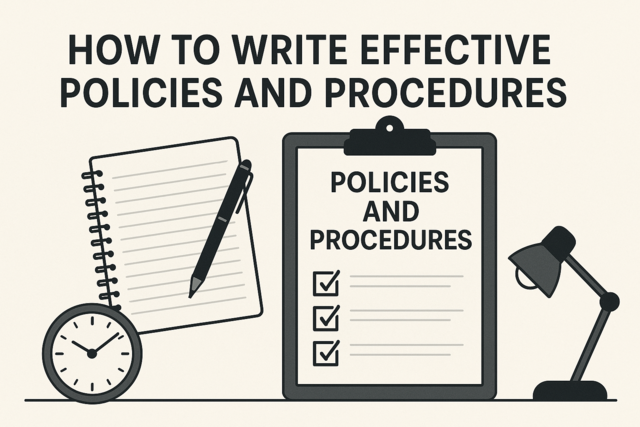Introduction
1. Apologize. By apologizing at the beginning of the call, you will instantly defuse some of the tension. It acknowledges the caller's feelings and conveys that you will not discount his or her concerns. Also apologize for the inconvenience the situation has caused the caller.
2. Listen, sympathize and ask questions. Remember, listening leads to understanding. Letting customers know you feel their frustration and understand why they feel that way makes you an ally rather than an enemy. Do not forget to ask open-ended questions that will give the caller the opportunity to elaborate on what has happened so that you clearly understand the situation.
3. Resolve the problem fairly. Do whatever is in your power to make customers happy by giving them the product or service they expected. If this cannot be done, suggest an alternative that may satisfy the customer. Fix the situation as quickly as possible.
4. Atonement. Although you will not always have to offer atonement, some customers are so upset that only going "above and beyond" will satisfy them. If you have resolved the initial problem and they are still unhappy, a gesture that says, "I'm so sorry for the inconvenience. Let me make it up to you," will soften even the hardest heart. Develop a few gestures of atonement you can use in these situations; perhaps a discount on their next order, free delivery, or a product upgrade at no charge.
5. Keep your word. Never, ever make a promise that you cannot keep. If your customer has been promised a particular item or delivery time and you don't follow through, customer service takes a major hit. Although it is tempting to promise an upset customer the moon and stars, do not. Unless, of course, you can actually deliver them! Short-term gain at the expense of truthfulness always leads to bigger problems in the long run.
When the Anger Does Not Go Away
If you have tried to help the customer and she or he is still angry, you may begin to get upset yourself. When a customer continually picks at you, it can feel like a personal attack. Defuse the situation by acknowledging the customer's continued irritation.
"I'm sorry, I understand that you're very upset, but it seems like you're upset with me personally. If I've upset you, I apologize. Can you tell me what I've done wrong? I'd really like to fix it so that we can work together on a solution to your problem."
Irate customers can blast you with their anger, but there are a few handy methods you can use within the framework of the Service Recovery Plan to let customers know you are on their side, you understand their frustration, and that you will work hard to find an acceptable solution:
-
Empathize with words. Phrases such as "I understand your concern," and "I don't blame you, I'm sure that was upsetting," can work wonders. However, do not turn the focus away from the customer by saying, "I'd have done the same thing." Remember, this call is not about you; it is about the customer, so avoid "I" statements here.
-
Remember the value of repetition. Repeat the situation back to the customer so he or she knows you are really listening: "You say you tried rebooting and still can't get an image on the screen?" or "Let me make sure I understand your concern. You say you rescheduled an appointment, and when you arrived, Mr. Evans wasn't available at the scheduled time?" This technique helps you in two ways: The client knows you were paying attention, and you confirm the details of the problem.
-
You may astonish some irate clients when you thank them. After all, they have given you the opportunity to solve a problem rather than simply writing your company off forever; shouldn't you be glad they did? Any version of the following will be disarming: "Thank you for bringing this to our attention so we can resolve the problem," "I'm glad you called so that I can help you with this," or "Thanks so much for calling me. I always want to know about problems so that we can serve you better in the future."
There are also some things you may say or do that are guaranteed to make an angry customer even angrier. You need to avoid these at all costs, even when your own temper is becoming frayed:
-
Do not raise your voice. If the customer is yelling, it is tempting to try to shout over her or him, but it only escalates the situation and puts your customer on the defensive. Keeping your voice even and pleasant indicates you are in control and professional. It also encourages the caller to mirror your own demeanor.
-
Do not hang up on the caller. Nothing inflames a customer more than a perceived insult, and hanging up sends the message, "You are not important to me and I do not respect you." If you absolutely cannot deal with the caller, it is time to transfer that person to a supervisor or someone else.
-
Do not argue with the customer. Even if the customer says the package never arrived and you have a tracking report indicating it was dropped off, do not say, "But I have the drop-off report right in front of me." You may win the argument, but you will probably lose a customer. People do not want to be told they are wrong, and putting customers on the defensive or insinuating you do not believe them is a quick way to lose them. A better option may be, "Let me investigate this for you. The tracking report seems to have an error that I'd like to follow up on, since it indicates a drop-off. Would you like to hold, or may I call you back?"
Knowing When to Hand Off
Sometimes no matter what you do, the customer continues to rant and rave, and the situation only escalates without resolution. You need to know when a customer service call is unsalvageable and recognize the signs that it is time to hand off the call to a superior.
It is not passing the buck when you are turning over the call after every attempt to make the customer happy has failed or when you know you are in danger of losing your composure. Letting a customer service call escalate in frustration after you have determined you cannot do anything more for the caller yourself is simply a waste of everyone's time.
If you have done everything you possibly can to help the customer who remains dissatisfied, it is probably time to bring a supervisor into the conversation. Knowing what you do and do not have the authority to do for a customer is key to knowing when to transfer a call. If you have offered an exchange and the customer refuses it, demanding a refund, give him to a supervisor if you do not have the authority to issue a refund.
It is also a good idea to transfer the call if the customer's temper is flaring and you are becoming too stressed to handle the situation diplomatically. You may also want to transfer callers if they begin verbally abusing you or using profanity.
Remember the etiquette of transferring a call when you have to hand customers off to someone else. The proper procedure is particularly crucial when you are transferring them because you cannot help them! Do not simply put them on hold and transfer the call without their consent. Even if you are putting them through to your supervisor because they have become irrational, you must continue to respect their right to refuse the transfer.
"I'm sorry I can't resolve this to your satisfaction. I'd like to transfer you to my supervisor. Perhaps he can help you with this. May I transfer you to Ms. Ramone?"
Always explain why you are transferring the customer and to whom she or he will be speaking. Pause to give the caller the opportunity to refuse. The caller may realize it is time to cool off and decide to call back later or simply leave a message for the supervisor to return the call.
Stay on the line until the transfer is complete, and make sure you introduce the caller to your supervisor. Also give a brief summary of the situation. It becomes annoying for customers if they have to repeat their story all over again, so a short synopsis is helpful.























